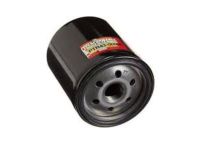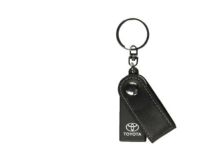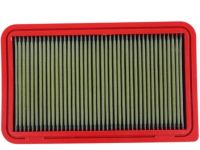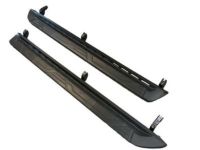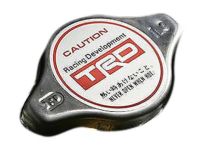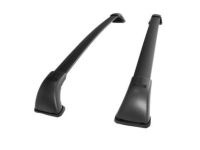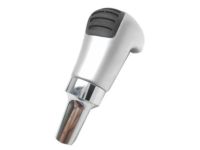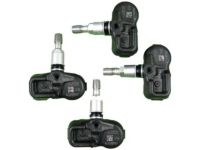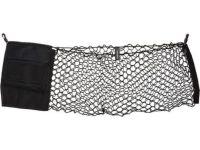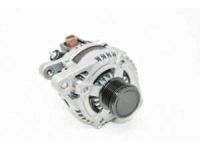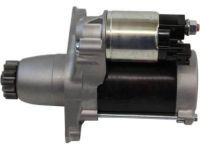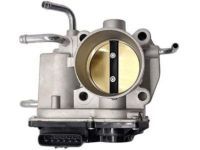

Why choose ToyotaPartsDeal
- High-Grade Parts
The best site to buy Toyota Highlander genuine parts for years has been ToyotaPartsDeal.com. We're the best online store for genuine parts. Toyota Highlander parts you could ever need are available here at the finest quality and best value on the web that will have your vehicle performing past its limits.
- Value For Money
What makes us the best choice for OEM Toyota Highlander parts? You get tremendous savings because our goal is to offer unbeatable prices. At ToyotaPartsDeal.com, Our products offer the same performance and reliability as their OEM counterparts without having to break your wallet.
- Quick Delivery
Everything you need for routine maintenance and repair can be found in our complete Toyota Highlander parts catalog. Having the best OEM parts inventory available, the parts for your vehicle will arrive fast no matter your location in the nation. You'll be back on the open road before you know it.
Popular Genuine Toyota Highlander Parts
- Power Train/Chassis Parts View More >
- Body Parts View More >
- Engine/Fuel/Tool Parts View More >
- Electrical Parts View More >
Shop Genuine Toyota Highlander Parts with ToyotaPartsDeal.com
Available in five- and seven-seat models, the Toyota Highlander is available with front-wheel drive and all-wheel drive. There are three trim levels for the American Toyota Highlander. When the model was launched, base and limited availability models were offered, with a Sport model introduced in March 2006. The integrated center console was available on all U.S. and Canadian Highlander Limited models in 2001. However, a smaller, non-integrated center console was available as an option on early Toyota Highlander models. Hybrid models were offered with partial all-wheel drive. The rear wheels are driven by a separate electric motor. This system is designed for driving on snow and ice. It can overheat the rear electric motor in off-road conditions. The Highlander was originally a traditional non-hybrid SUV with an internal combustion engine. The hybrid car was introduced at the 2004 North American International Auto Show. The power steering pump, water pump, and air conditioning compressor were replaced with electric ones. A modified alternator was used in the hybrid system. The 2008 Highlander's sole power source was a 2GR-FE V6 engine equipped with a five-speed automatic transmission. Production of the four-cylinder model ceased. But it was resumed in 2009. The 3.5-liter engine is more powerful than the previous V6. Larger dimensions and better sound insulation have increased curb weight by almost 500 kg. Fuel consumption has improved slightly. Non-hybrid engines remain unchanged for 2011, although the SE version will now have a four-cylinder engine. It was previously only available in the base model. All trim levels now have more standard features. The hybrid car is equipped with the Toyota Hybrid Synergy Drive system. It allows it to use electric power only over short distances and at low speeds.
Toyota Highlander, an SUV designed for demanding road conditions, may encounter several common issues, especially with its engine, suspension, and braking system. Engine performance degradation, as indicated by misfiring, slow acceleration, decreased gas mileage, or difficulty in starting, is a commonly reported issue. Regular inspection and replacement of parts like the oil filter, spark plug, and air filter can help alleviate these issues. Suspension failure symptoms include vehicle tilting, uneven tire wear, bouncing during driving, bottoming out, or producing rattling or squeaking noises. Checking the coil springs and sway bar bushing can help identify issues here. Braking system failures, usually due to a damaged brake pad set, worn brake disc, or faulty brake drum, can also occur. Apart from these systems, other components like the seat belt, cabin air filter, and wiper arm need regular maintenance. The seat belt, a crucial safety feature, should be replaced after each car accident. The cabin air filter, essential for a comfortable driving environment, needs regular checks and replacement, and the wiper arm should be maintained for optimal windshield cleaning.
Choosing OEM parts is the best decision for guaranteeing superior quality and perfect performance. These components undergo stringent quality checks and are carefully constructed to comply with Toyota's factory specifications, ensuring a smooth installation process. Looking for affordable and high-quality auto parts? Then you have already arrived at the best online shop. We offer all Toyota Highlander parts at the lowest prices. Moreover, all Toyota Highlander genuine parts come with a manufacturer's warranty. In the long run, you would realize you have saved a lot of trouble and money with OEM parts from here.
Toyota Highlander Parts Questions & Answers
- Q: How to remove the alternator on Toyota Highlander?A: The replacement of the alternator begins with disconnecting the negative Car Batteries cable and removing the alternator drive belt. For four-cylinder models, remove the electrical connectors and the two mounting bolts. For V6 models with 3.0L and 3.3L engines, remove the electrical connectors, the pivot and lock bolts, and the alternator. On certain Lexus and Toyota models, raise the vehicle, and remove components such as the fender molding, splash shield, engine cover, battery, air filter housing, and radiator. For the 2016 and later Lexus and 2017 and later Toyota models with 3.5L, 2GR-FKS engines, remove the radiator, cooling fan shroud, drive belt, electrical connectors, wiring harness bracket bolt, and harness shield bolts. When replacing the alternator, make sure the new unit is identical to the previous one, and replace the pulley if necessary. The installation is the reversal of the removal, make sure to adjust the drive belt tension, and check the charging voltage.
- Q: How to remove the starter motor from Toyota Highlander?A: To remove the starter motor on a four-cylinder model, disconnect the negative battery terminal cable. Also, remove the air filter housing and intake duct for 2.4L engines 2003 and earlier models, or the Car Batteries for models that are 2004 and later. Next, you should detach the engine cover, air filter housing, intake ducts, and filter bracket on the 2.7L engines. Then, disconnect the electrical connectors and remove the mounting bolts. For V6 models, disconnect the negative battery cable and remove the battery and the battery tray for Highlander models or just the battery depending on the engine models. Once you remove the battery, remove the air filter housing as well as the intake duct on all models. On 1999-2003 V6 models, start by removing the starter motor, and then the electrical connectors. On RX350 models that come with a 2GR-FKS engine, remove the shift control cable, the bracket, and the mounting bolts. On models that are 2004 and later, remove the electrical connectors and the starter mounting bolts. Installation is the reverse of the removal.
- Q: How to remove and install the throttle body on Toyota Highlander?A: To ensure smooth operation, check the throttle linkage on 1999 through 2003 models. If the air intake duct on the throttle body is dirty, remove it and clean it using aerosol carburetor cleaner and a toothbrush, making sure the cleaner is safe for oxygen sensor systems and catalytic converters. However, avoid cleaning the Throttle Position (TP) sensor or the Idle Speed Control (ISC) valve with the solvent. For the removal and installation process, disconnect the negative battery terminal cable, remove the air intake duct, disconnect the electrical connectors from the Throttle Position (TP) sensor and Idle Speed Control (ISC) valve, disconnect the cruise control cable, accelerator cable, brake booster vacuum hose, and vacuum hoses from the throttle body. Clamp off and plug the coolant hoses to minimize coolant loss, then remove the throttle body mounting bolts or nuts and discard the old throttle body gasket. For 2004 and later models, follow similar steps but also remove the strut brace, engine cover, windshield wiper arms and motor, side seals, and plastic cowl if applicable. Disconnect the electrical connector and disengage the electrical harness from the clip on the fuel pipe bracket, disengage the fuel hose, and disconnect the vacuum and coolant hoses from the throttle body. Remove the throttle body mounting bolts and discard the old gasket, then install the new gasket and tighten the throttle body mounting bolts. Finally, check the coolant level and add as necessary.


































